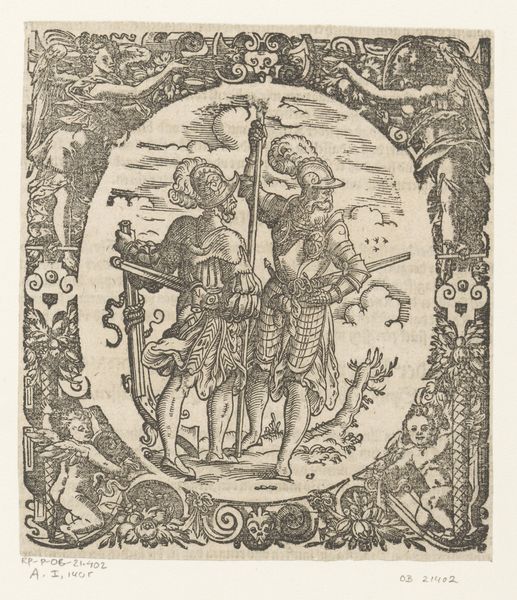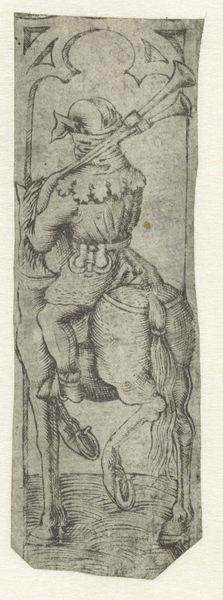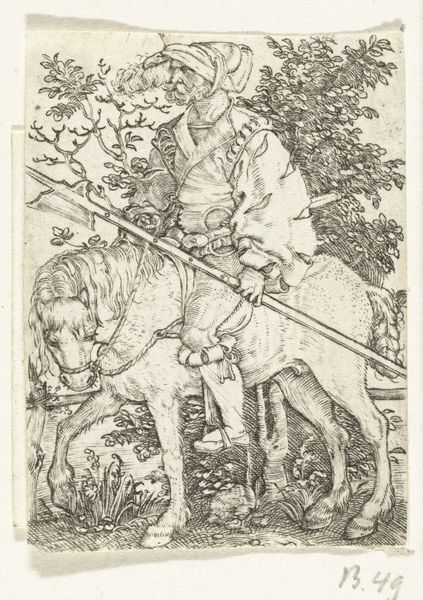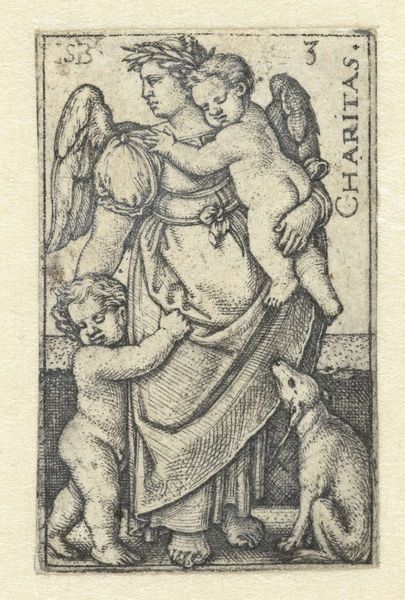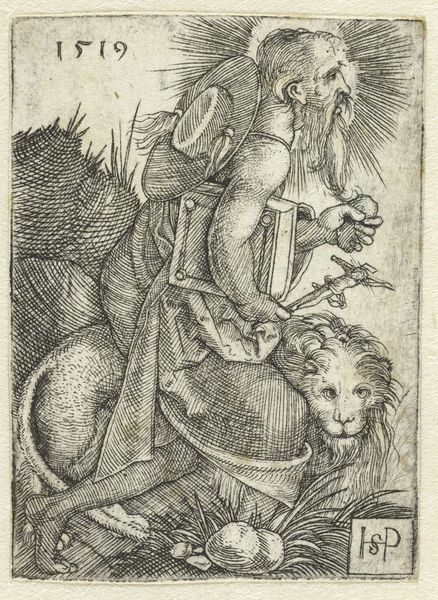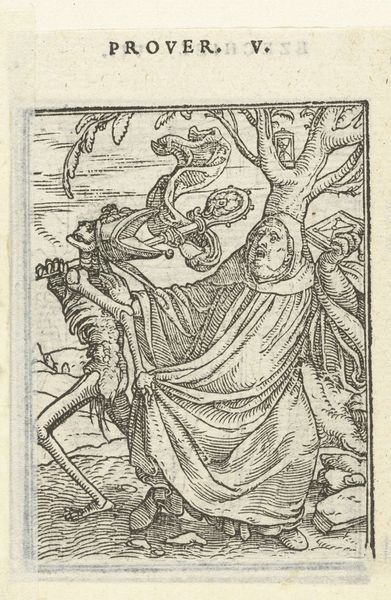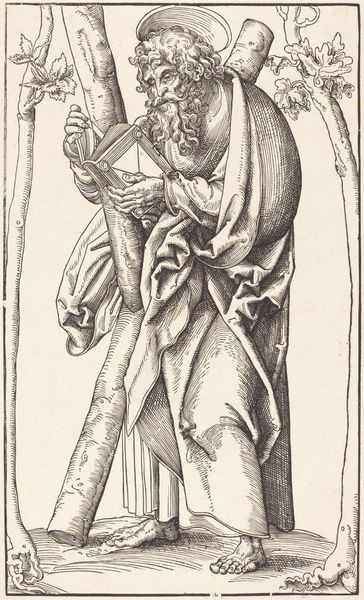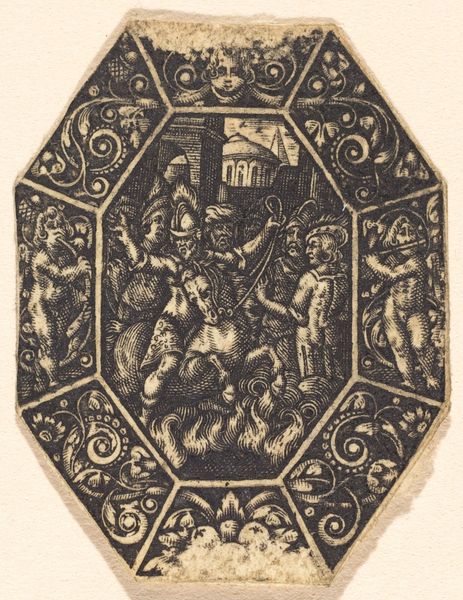
Dimensions: height 48 mm, width 36 mm
Copyright: Rijks Museum: Open Domain
Curator: Sebald Beham created this engraving, titled "Man door vrouw betrapt op overspel"—"Man caught in adultery by his wife"—in 1537. It’s currently held in the Rijksmuseum. Quite a dramatic scene, wouldn’t you say? Editor: Absolutely. The high contrast immediately grabs you. The way he renders the figures with such fine, close hatching creates a very palpable sense of tension. There's a definite linear quality. Curator: Indeed. This print offers a glimpse into the social anxieties of 16th-century Europe, particularly anxieties around gender roles and infidelity. The wife is portrayed wielding a rather menacing club over her cheating husband, while another woman embraces him perhaps attempting to shield him, adding a layer of complexity to the narrative. What commentary might Beham be making about patriarchal structures and power dynamics in marriage? Editor: That's a potent reading. However, note the clever use of line and form. Beham utilizes a variety of hatching techniques, notice the areas of dense cross-hatching create areas of deep shadow, heightening the emotional intensity and visual drama. Consider the spatial relationships: the wife towers over the figures in the foreground. Curator: But surely that positioning also reflects social hierarchy? Consider the artist's context in the German Renaissance, marked by social upheaval and religious reform. The print could be interpreted as a critique of moral laxity or perhaps a commentary on shifting social expectations of women, empowered to take matters into their own hands when wronged. I also think the inscription at the top, written in old German reinforces that there will be repercussions. Editor: While social and historical context provide essential scaffolding for interpretation, look closely at how the linear precision guides our eyes, enhancing the immediacy of the narrative. Note the way the characters are composed—forming a compact pyramid which emphasizes their connectedness. I find the dynamism of the lines combined with subtle variations in tonality draws the viewer into an intriguing visual dance of form and technique. Curator: Agreed. Perhaps we see a blend of both technique and social commentary, a fusion of artistic skill and keen observation of societal tensions? The piece really invites us to consider art as both a mirror and a critical lens reflecting human behavior. Editor: Precisely. It is indeed fascinating how Beham orchestrates this moment through graphic strategies of linear expression, inviting multiple layers of interpretation and, as you stated, critique.
Comments
No comments
Be the first to comment and join the conversation on the ultimate creative platform.


